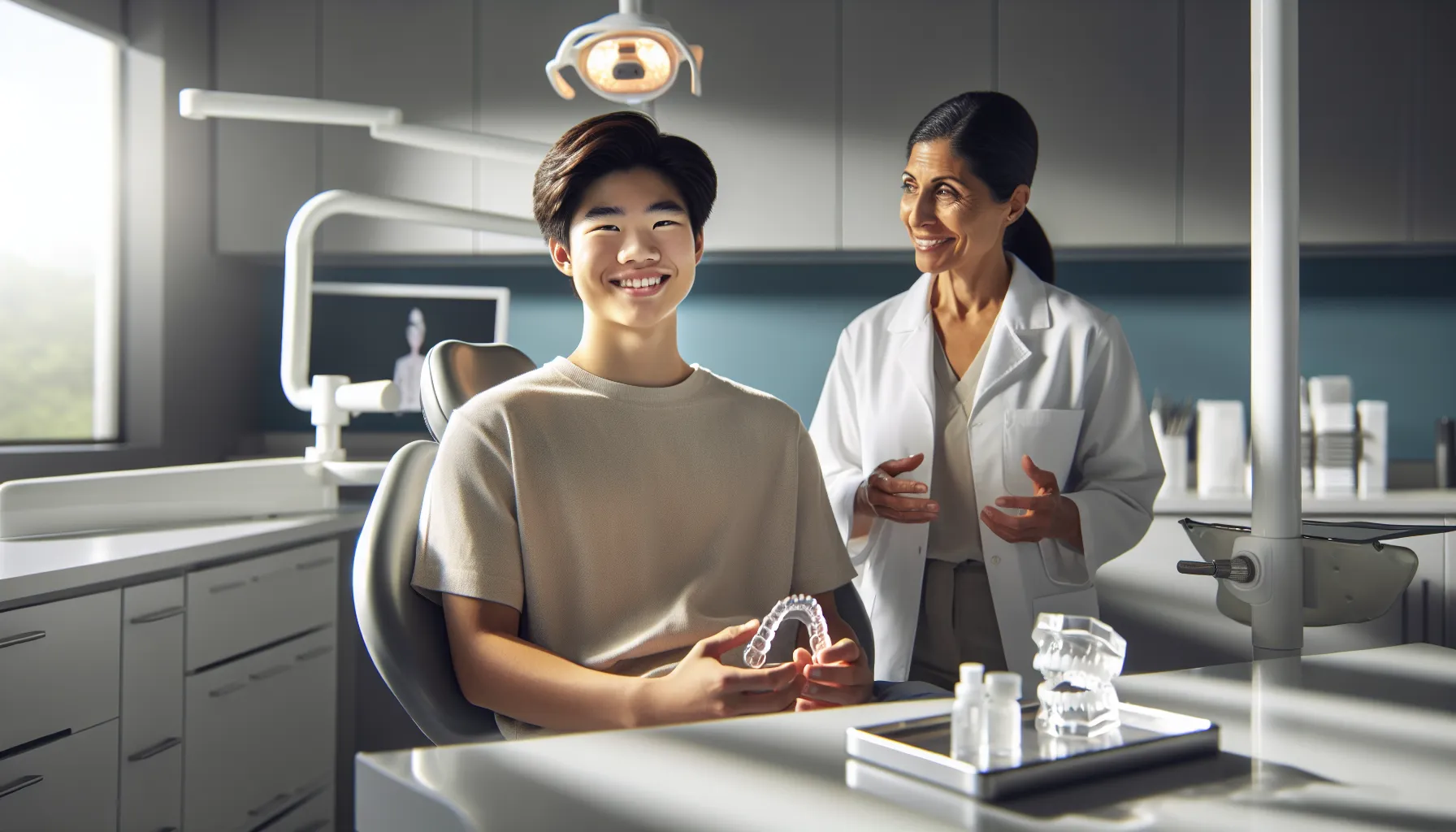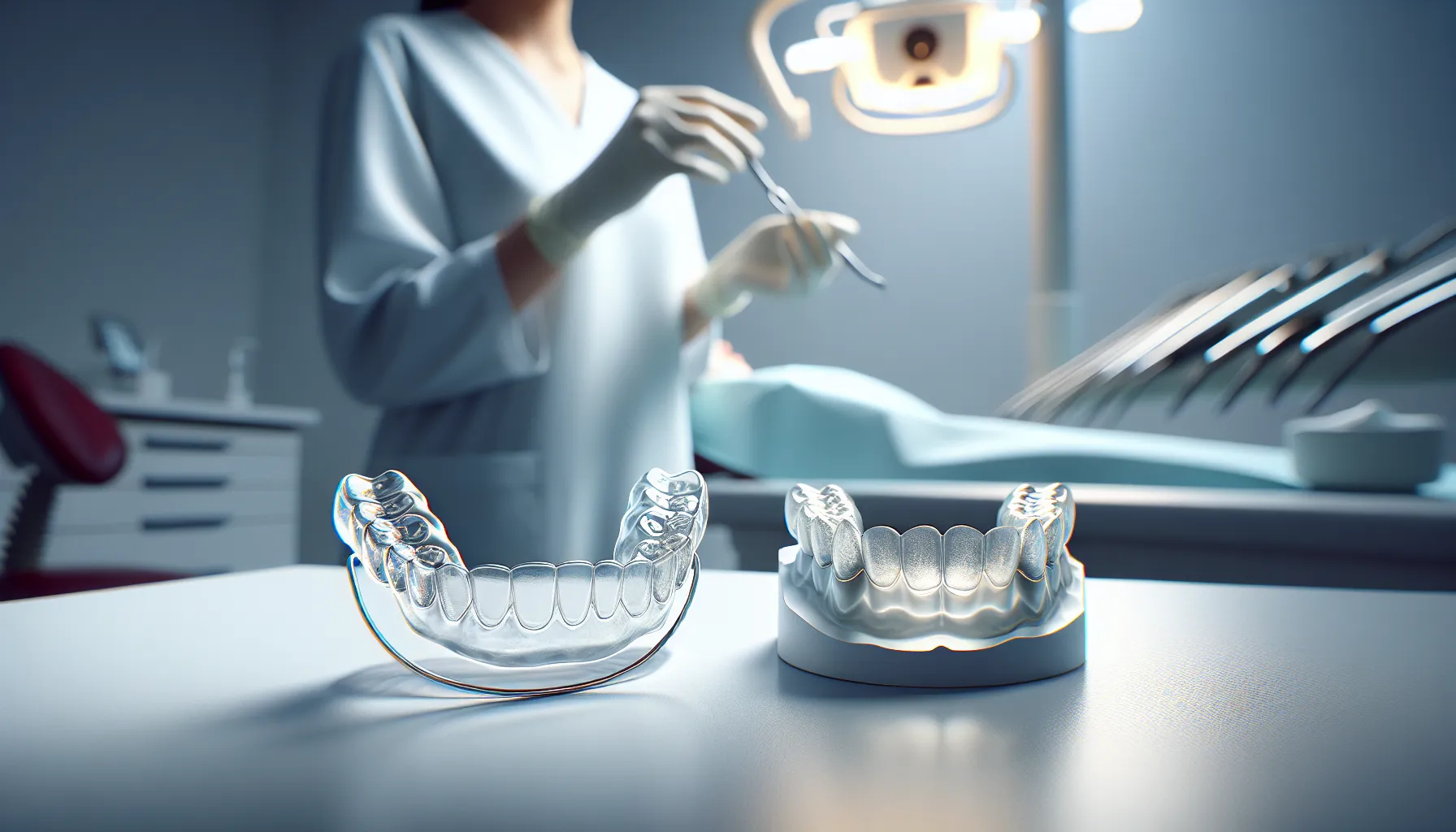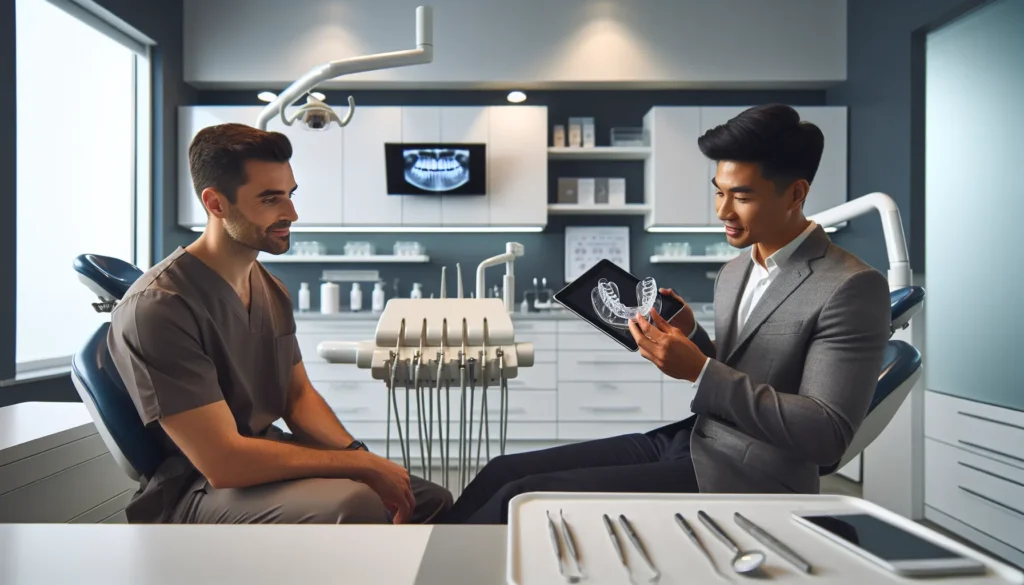Getting your braces off is one of those milestone moments, you’ve waited months or even years for that perfect smile, and finally, it’s here. But here’s what catches most people off guard: the work isn’t quite finished yet. That retainer your orthodontist hands you? It’s not optional, and it’s definitely not something you can ignore after a few weeks.
We’ve seen it happen more times than we can count. Someone stops wearing their retainer after a few months, thinking their teeth are “set,” only to notice shifting six months later. The frustration is real, and unfortunately, teeth don’t care how much time or money you invested in straightening them. They’ll drift back given half a chance.
The good news is that maintaining your post-treatment results doesn’t have to be complicated. With the right information about retainers and some solid habits, you can keep that smile exactly where you want it, for life.
Why Retainers Are Essential After Orthodontic Treatment

Let’s talk about why your orthodontist is so insistent about that retainer. It’s not just a precaution, it’s absolutely necessary.
When braces or aligners move your teeth into their new positions, the bone and soft tissues surrounding them need time to adapt and stabilize. Think of it like this: your teeth have lived in their original spots for years, and the supporting structures have memory. Without something holding them in place, those teeth will naturally try to return to where they came from. This backward drift is called relapse, and it happens more often than you’d think.
The reality is that teeth are never truly “locked in.” Even decades after treatment, they can shift if not properly retained. We’re talking about a lifelong commitment here, but honestly, once you get into the routine, it becomes second nature.
Here’s what most people don’t realize: the first few months after getting your braces off are the most critical. Your teeth are at their highest risk of shifting during this period because the bone around them is still remodeling. Skipping your retainer during this time, even for a few days, can lead to noticeable movement.
Retainers work by applying gentle, consistent pressure (or in the case of fixed retainers, acting as a physical barrier) that keeps your teeth exactly where your orthodontist positioned them. It’s simple physics, really. The constant presence of the retainer prevents any unwanted movement and gives your mouth time to fully adjust to its new configuration.
And let’s be honest, after investing all that time and money into orthodontic treatment, the last thing you want is to watch your teeth slowly drift back. We’ve heard too many stories of people who stopped wearing their retainers and ended up needing additional treatment years later. Don’t let that be you.
Types of Retainers and How They Work

Not all retainers are created equal, and understanding your options helps you know what to expect. Your orthodontist will recommend the type that best suits your specific situation, but it’s good to know what’s out there.
Fixed Retainers
Fixed retainers are thin wires that get bonded to the back of your teeth, usually the lower front ones, though sometimes the uppers too. You can’t see them when you smile, and honestly, after a week or two, you’ll barely notice they’re there.
The biggest advantage? You literally can’t forget to wear them. They’re working 24/7 to keep those teeth in line, which makes them incredibly effective. We particularly like them for lower front teeth because that’s where shifting tends to happen most noticeably.
The trade-off is cleaning. You’ll need to be diligent about flossing around the wire, which takes a bit more effort than regular flossing. Floss threaders or water flossers become your best friends. And yes, you’ll need to have your orthodontist check on them periodically to make sure the bond is still solid.
Removable Retainers
Removable retainers give you flexibility. You can take them out for meals, important meetings, or photos, then pop them back in afterward.
There are two main types here. Clear plastic retainers (like Essix retainers) look similar to clear aligners. They’re virtually invisible and fit snugly over your teeth. They’re comfortable and discreet, but they can crack or wear out over time, especially if you’re a nighttime grinder.
Then there are the traditional Hawley retainers, the ones with the acrylic plate and metal wire across the front. They’re more durable than the clear kind and can last for years with proper care. Sure, they’re more visible, but if you’re mainly wearing them at night, that’s not usually a concern.
The catch with any removable retainer is simple: it only works if you actually wear it. We can’t stress this enough. The most expensive, perfectly crafted retainer in the world is useless if it’s sitting in its case on your nightstand. Consistency is everything.
How Long Should You Wear Your Retainer
This is the question we hear most often, and the answer might not be what you want to hear. Ready? Indefinitely. For most people, that means nightly wear for life.
Now, let’s break that down because it’s not as intense as it sounds.
Immediately after your braces come off, you’ll typically wear your retainer full-time, and we mean all day and night, only removing it to eat and brush your teeth. This phase usually lasts anywhere from a few months to about a year, depending on your specific case and your orthodontist’s recommendation.
After that initial period, most people transition to nighttime-only wear. This is where you’re at for the long haul. Those first one to two years after treatment are absolutely crucial, your teeth and the surrounding bone are still stabilizing during this time. But even after things have settled, your teeth can still shift if given the opportunity.
Think about it this way: our bodies are constantly changing throughout our lives. Teeth naturally tend to shift forward and crowd as we age, even in people who never had braces. So if you had orthodontic treatment, you need that nightly reminder (in the form of a retainer) to keep things where they belong.
Sound like forever? Well, it kind of is. But here’s the thing, wearing a retainer while you sleep becomes as automatic as brushing your teeth. Most of our long-term patients tell us they feel weird going to bed without it. It just becomes part of the routine.
And trust us, twenty minutes of nightly wear is a whole lot easier than going through orthodontic treatment a second time.
Proper Care and Maintenance of Your Retainer
Taking care of your retainer isn’t rocket science, but there are definitely right and wrong ways to do it. Let’s make sure you’re doing it right.
Daily Cleaning Routine
Your retainer spends hours in your mouth every day, so yes, it needs regular cleaning. We’re talking daily here, not weekly, not when you remember, but every single day.
For removable retainers, the best approach is simple: rinse it every time you take it out, and give it a proper cleaning at least once a day with a soft toothbrush and mild soap. Some people use gentle dish soap, others prefer hand soap, both work fine as long as it’s non-abrasive and fragrance-free.
Here’s what you absolutely should NOT do: use hot water. Hot water can warp the plastic components of your retainer, changing its shape and making it fit improperly. Always use lukewarm or cool water. Always.
Toothpaste might seem like the obvious choice for cleaning, but many toothpastes are actually too abrasive for retainers. They can create tiny scratches where bacteria love to hide, making your retainer cloudy and less hygienic over time.
For fixed retainers, your main focus is keeping that area clean. Floss daily around the wire (yes, we know it’s tedious, but it’s necessary), and consider using a water flosser to flush out anything hiding behind the wire.
Storage and Handling Tips
This seems obvious, but you’d be shocked how many retainers end up in the trash. The culprit? Napkins.
Never, and we mean never, wrap your retainer in a napkin or paper towel. That’s a one-way ticket to the garbage can, especially if you’re eating out. Restaurant staff are not going to unwrap every napkin to check for retainers. Get yourself a retainer case (your orthodontist probably gave you one), and use it religiously.
When you’re not wearing your retainer, it should be in one of two places: in your mouth or in its case. Not on the bathroom counter. Not in your pocket. Not on your lunch tray. In. The. Case.
Keep it away from heat sources too. Don’t leave it in a hot car, near a window in direct sunlight, or anywhere else it might get warm. Remember what we said about warping? Heat is the enemy.
And please, keep it away from pets. Dogs especially seem to find retainers absolutely irresistible, and they will destroy them given the chance. We’ve heard some truly heartbreaking (and expensive) pet-chewing stories.
Common Retainer Problems and Solutions
Even with the best care, things can go wrong. Here’s what to watch for and what to do about it.
Loss or Damage: Life happens. Retainers get lost, stepped on, chewed by dogs, or accidentally thrown away. If this happens to you, call your orthodontist immediately. Don’t wait a week or two, every day without your retainer gives your teeth an opportunity to shift. Most orthodontic offices can get you a replacement relatively quickly, though there will be a cost involved (all the more reason to take good care of it).
Fit Issues: If your retainer suddenly feels tight or uncomfortable, that’s actually your teeth telling you something. Either you haven’t been wearing it consistently and your teeth have shifted slightly, or something has changed with the retainer itself.
Do not force a retainer that doesn’t fit properly. You could damage your teeth or the retainer. Instead, call your orthodontist right away. If you’ve only skipped a few days, you might be able to gradually get back into wearing it, but you need professional guidance on this. If it’s been weeks or months, you might need a new retainer altogether.
Plaque and Buildup: Notice white buildup or a cloudy film on your retainer? That’s plaque and mineral deposits from your saliva. It means your cleaning routine needs an upgrade. Plus to daily cleaning, you might need to do a deeper clean weekly with a retainer cleaning solution or a denture cleaner (just follow the package directions).
For fixed retainers, plaque buildup around the wire is your main concern. This is why those regular dental checkups and professional cleanings are so important, they’ll catch buildup you might miss.
Broken or Loose Bonds (Fixed Retainers): If you have a fixed retainer and you feel a piece of the wire coming loose or poking you, contact your orthodontist. Don’t try to fix it yourself or ignore it. A loose wire can’t do its job, and it can also irritate your tongue or gums.
Maintaining Overall Dental Health Post Treatment
Your retainer is just one piece of the post-treatment puzzle. The rest of your dental health still needs attention, maybe even more so now that your teeth are properly aligned.
Here’s something we love: straight teeth are actually easier to keep clean. When your teeth were crowded or overlapping, there were all sorts of nooks and crannies where plaque could hide. Now that everything’s lined up nicely, your toothbrush and floss can reach every surface more easily. That’s a win for cavity prevention and gum health.
But that doesn’t mean you can slack off on your oral hygiene routine. Keep brushing twice a day for two minutes each time, and yes, you still need to floss daily. With a fixed retainer, flossing becomes even more important because of that wire on the back of your teeth.
Regular dental checkups, we’re talking every six months, are non-negotiable. Your dentist will not only clean your teeth professionally but also check on how your retainer is working and whether your bite is staying stable. Think of these visits as maintenance checks for your investment.
Professional cleanings are particularly important if you have a fixed retainer. Even with excellent home care, buildup can occur around the bonded wire, and your dental hygienist has the tools to thoroughly clean that area.
Don’t forget that your newly aligned teeth can still get cavities or gum disease if you’re not taking care of them. Orthodontic treatment straightened your teeth, it didn’t make them invincible. The same good habits that kept you healthy during treatment need to continue afterward.
What to Do If You Stop Wearing Your Retainer
Let’s say you’ve fallen off the retainer wagon. Maybe you went on vacation and forgot it, or you just got busy and it’s been sitting in its case for weeks. What now?
First, don’t panic, but also don’t wait. Teeth can start shifting within days or weeks of stopping retainer wear, the exact timeline varies from person to person, but it happens faster than you’d think. The longer you wait, the more movement can occur.
If it hasn’t been too long and your retainer still fits (even if it’s a bit tight), try wearing it again. Start with shorter periods and work your way back up to your regular schedule. But, and this is important, if it feels really tight or painful, stop and call your orthodontist. You don’t want to force something that might damage your teeth.
If your retainer no longer fits at all, you’ll need to see your orthodontist for an evaluation. Depending on how much your teeth have shifted, you might need a new retainer, or in some cases, additional treatment to move things back into place before you can even wear a retainer again. We know that’s frustrating (and potentially expensive), but addressing it sooner rather than later will minimize the damage.
This is honestly one of the most preventable problems we see. We can’t emphasize enough: just keep wearing your retainer. Set a reminder on your phone if you need to. Make it part of your bedtime routine. Put the case somewhere you’ll see it. Whatever it takes.
Your future self, and your smile, will thank you.
Conclusion
We get it. After months or years of orthodontic treatment, you’re ready to be done with the appointments and the maintenance and all of it. But here’s the truth: retainers are your insurance policy on all that time, effort, and investment you just made.
The rules are pretty straightforward when you break them down. Wear your retainer as directed, full-time at first, then nightly for the long haul. Clean it daily and store it properly when it’s not in your mouth. Keep up with your regular dental checkups. And if something goes wrong, don’t wait, call your orthodontist right away.
Yes, it’s a commitment. But it’s a small one compared to what you’ve already been through. And once it becomes habit, you won’t even think about it anymore. It’ll just be what you do.
Your smile looks amazing now. Let’s keep it that way.

